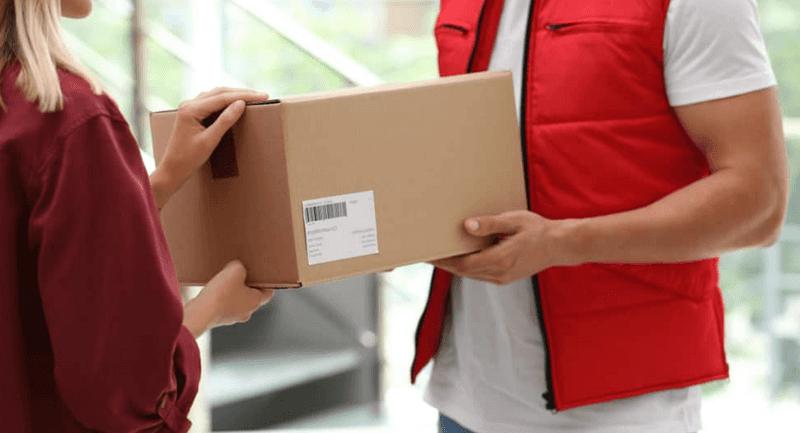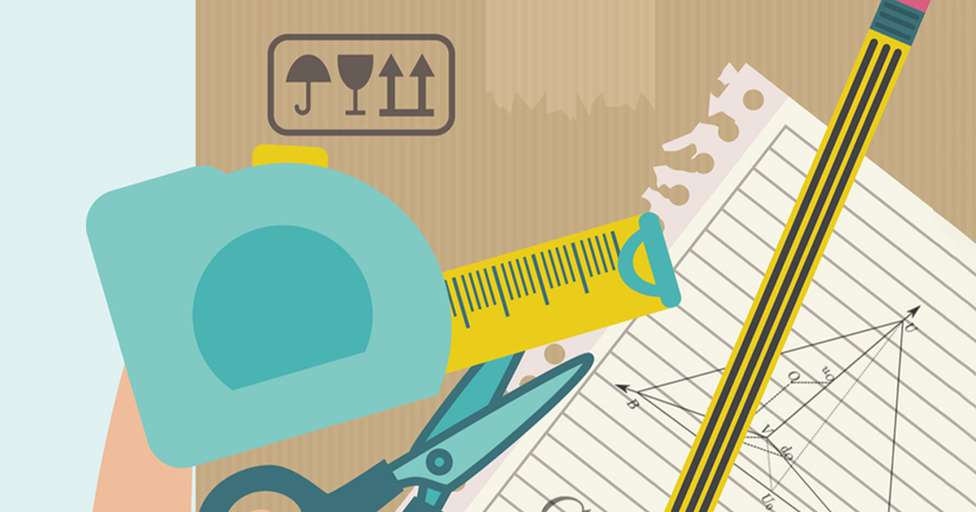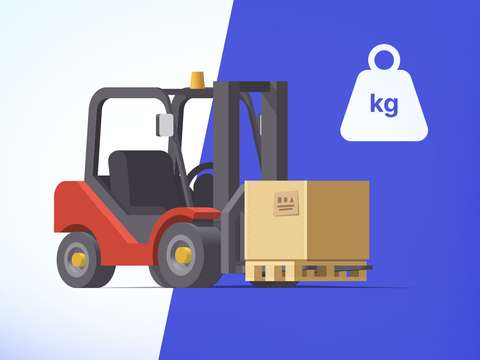After years of work with all kinds of online shops, there’s one topic that comes up more often than expected, even from brands with most experience in the sector. I’m talking about the fundamental question of how to reduce shipping costs in eCommerce.
In this guide, we cover the topic of shipping costs in depth. You will learn effective techniques to reduce costs quickly, advanced strategies, and how to get lower shipping rates from carriers.
Find out 11 effective ways to reduce your shipping costs and start saving money from day one!
Why is it so important to reduce shipping costs
Shipping costs are one of the most integral costs for online stores. They can represent a significant portion of gross profit, so it is important to find ways to reduce them.
Here are some statistics about how shipping cost affects profitability in ecommerce:
- Shipping costs can account for up to 30% of the cost of goods sold (COGS) for ecommerce businesses.
- Shipping costs are the second-highest expense for ecommerce businesses, after the cost of goods sold.
- A study by Statista found that 63% of shoppers abandon their carts due to high shipping costs.
- A study by eMarketer found that 85% of shoppers are more likely to shop with a retailer that offers free shipping.
- A study by McKinsey & Company found that a 10% reduction in shipping costs can increase profits by 1-2%.
Recommend to read
Learn how to professionally manage your eCommerce shipments
Main factors for shipping cost reduction
Before analyzing the best strategies to reduce shipping costs in eCommerce, there are some factors you need to know to understand how the cost works within this industry:
- Weight and size of the package: The heavier and larger the package, the more expensive it will be to ship
- Distance: The further the package has to travel, the more expensive it will be to ship
- Shipping method: Choosing a slower or more economical shipping method can save you money on shipping costs
- Shipping carrier: Different shipping carriers offer different rates. Comparing rates from different carriers can help you find the best deal
- Discounts and promotions: Many shipping carriers offer discounts for shipping a high volume of packages or for shipping during off-peak times. Taking advantage of these discounts and promotions can save you money on shipping costs
Not sure how much you are really paying for your shipments? In this article we show you how tocalculate your shipping costs.
11 ways to reduce shipping costs for both small and big businesses
By applying the following ways to reduce shipping costs, you can save money on carrier fees, logistics costs, return management, and other fundamental aspects of eCommerce operations.
1. Negotiate shipping discounts
Negotiate with your shipping carriers to get lower rates based on your volume or other factors. This can save you a significant amount of money on shipping costs.
To negotiate shipping discounts, you need to be prepared. Here are some tips:
- Know your volume. Shipping carriers are more likely to offer discounts to businesses that ship a high volume of packages.
- Understand your needs. What are your shipping requirements? Do you need fast shipping? Do you ship internationally? The more information you have about your shipping needs, the better equipped you will be to negotiate a discount.
- Compare rates. Get quotes from multiple shipping carriers before you negotiate. This will give you a good idea of the market rates and help you to set realistic expectations.
- Be prepared to compromise. It is unlikely that you will get exactly the discount you want. Be prepared to compromise on some things in order to get the best possible deal.
Here are some examples of how to get lower shipping rates:
- Negotiate a discount based on volume. If you ship a high volume of packages, you may be able to negotiate a discount with your shipping carrier. The discount may be based on the total number of packages you ship each month or the total weight of the packages you ship.
- Negotiate a discount based on service level. If you are willing to sacrifice some speed or service level, you may be able to negotiate a discount with your shipping carrier. For example, you may be able to get a discount if you are willing to ship packages by ground instead of by air.
- Negotiate a discount based on contract terms. If you are willing to commit to a long-term contract with a shipping carrier, you may be able to negotiate a discount. The discount may be based on the total volume you commit to shipping or the length of the contract.
2. Review all shipping invoices
Carefully review all of your shipping invoices to identify any errors or overcharges. This can help you save money and avoid disputes with your shipping carriers.
How to review your invoices to save money on shipping:
- Check the accuracy of the shipping rates. Make sure that you are being charged the correct rates for the weight, size, and destination of your packages. You can compare the rates on your invoice to the rates listed on the shipping carrier's website.
- Look for duplicate charges. Sometimes, shipping carriers may duplicate charges, especially if you have multiple orders shipping to the same destination. Carefully review your invoice to identify any duplicate charges.
- Check for accessorial charges. Accessorial charges are additional fees that shipping carriers may charge for services such as fuel surcharges, delivery confirmation, and signature required. Make sure that you are only being charged for accessorial services that you requested.
- Compare your invoices to your shipping plan. If you have a shipping plan with your shipping carrier, compare your invoices to your shipping plan to make sure that you are being charged the correct rates and discounts.
As a quick side note, did you know that Outvio you can review your shipping invoices completely automatically and error-free?
3. Combine shipments whenever possible
If you have multiple orders going to the same customer or location, combine them into one shipment. This can save you money on shipping costs in a number of ways:
- You will only be charged for one shipment instead of multiple shipments.
- You can often get a discount on shipping for larger shipments.
- You can avoid shipping overcharges, which can occur when you ship multiple smaller packages instead of one larger package.
To combine shipments, you can either manually combine them yourself or use a shipping management software. If you are manually combining shipments, be sure to use the same shipping carrier for all of the orders in the shipment. You should also make sure that the weight and dimensions of the combined shipment are within the limits of the shipping carrier.
Combining shipments, or ‘order merging’ as we like to call it, is something that you can automate with Outvio’s shipping rules with ease, and for example effortlessly consolidate all orders going to the same customer or location.

4. Optimize your packaging
Use the right size and type of packaging for your products to avoid shipping overcharges. For example, if you are shipping a lightweight product, you can use a smaller, lightweight package. If you are shipping a fragile product, you will need to use more protective packaging.
Here are some additional tips for optimizing your packaging:
- Use custom packaging: Custom packaging can help to protect your products in transit and create a positive customer experience. However, custom packaging can be more expensive than standard packaging. If you are on a tight budget, you may want to consider using standard packaging.
- Use void fill: Void fill is used to fill the empty space in boxes to prevent products from shifting during transit. There are a variety of void fill materials available, such as bubble wrap, packing peanuts, and air pillows. Choose the right void fill material for your products and budget.
- Test your packaging: Before you start shipping your products, test your packaging to make sure that it is adequate to protect your products in transit. You can do this by dropping your packages from a height and simulating the shipping process.
5. Find discounts on shipping supplies
If you buy a lot of shipping supplies, you can often find discounts from wholesalers or online retailers. This can help you save money on your shipping costs.
How to find discounts on shipping supplies:
- Look for bulk discounts. If you buy shipping supplies in bulk, you can often get a discount. Many suppliers offer bulk discounts on boxes, envelopes, packing tape, and other shipping supplies.
- Shop around and compare prices. Don't just buy shipping supplies from the first supplier you find. Shop around and compare prices from different suppliers to get the best deal.
- Take advantage of sales and promotions. Many suppliers offer sales and promotions on shipping supplies throughout the year. Be sure to sign up for email lists and follow suppliers on social media so that you can be notified of upcoming sales and promotions.
- Consider buying used shipping supplies. You can often find used shipping supplies for sale online or at local businesses. This can be a great way to save money on shipping supplies, especially if you are just starting out.
6. Prepay shipping for discounts
Many shipping carriers offer discounts for prepaying shipping. The amount of the discount can vary depending on the carrier, the shipping service, and the weight and dimensions of the package. However, in general, prepaying shipping can save you a significant amount of money on your shipping costs.
Some examples of the amount of money you can save by prepaying shipping:
- USPS: USPS offers a discount of up to 5% for prepaying shipping on Priority Mail and First-Class Package Service packages.
- UPS: UPS offers a discount of up to 7% for prepaying shipping on UPS Ground and UPS SurePost packages.
- FedEx: FedEx offers a discount of up to 5% for prepaying shipping on FedEx Ground and FedEx Home Delivery packages.
7. Use third-party shipping insurance
Third-party shipping insurance is often less expensive than shipping insurance offered by shipping carriers, and it can also offer more comprehensive coverage. For example, third-party shipping insurance may cover the full value of your shipment, while shipping carrier insurance may only cover a portion of the value.
Some additional benefits of using third-party shipping insurance:
- More affordable: Third-party shipping insurance is often less expensive than shipping carrier insurance, especially for high-value shipments.
- More comprehensive coverage: Third-party shipping insurance may offer more comprehensive coverage than shipping carrier insurance, including coverage for high-value items, theft, and loss.
- Easier to file claims: Third-party shipping insurance providers may be easier to file claims with than shipping carriers.
- More flexible coverage options: Third-party shipping insurance providers may offer more flexible coverage options than shipping carriers, such as the ability to purchase insurance for individual shipments or for a specific period of time.
8. Use a variety of box and envelope sizes
Keep a variety of box and envelope sizes on hand so that you can choose the right size for each order. This can help you avoid shipping overcharges.
Some tips for using a variety of box and envelope sizes to reduce shipping costs and improve customer experience:
- Keep a variety of box and envelope sizes on hand. This will give you the flexibility to choose the right size for each order.
- Use a packing materials calculator to determine the best size box or envelope for each order. There are many free online calculators available.
- Invest in a few different types of packing materials, such as bubble wrap, packing peanuts, and air pillows. This will allow you to protect your products in transit, regardless of the size of the box or envelope.
- Take the time to package each order carefully. Make sure that the product is well-cushioned and that the box or envelope is securely sealed.
9. Reduce returns to save on shipping costs
Returns can be costly, so it is important to reduce returns whenever possible. This can be done by offering clear and accurate product descriptions, providing excellent customer service, and making it easy for customers to exchange or return products.
Here are some additional tips for reducing returns to save on shipping costs:
- Offer clear and accurate product descriptions: Make sure that your product descriptions are clear, accurate, and complete. Include information on the size, colour, material, and other important features of the product. This will help customers to make informed purchase decisions and reduce the likelihood of returns.
- Provide excellent customer service: Provide excellent customer service before, during, and after the sale. This will help customers to feel confident about their purchase and reduce the likelihood of returns. For example, you can offer live chat support, answer customer questions promptly, and resolve any issues quickly and efficiently.
- Make it easy for customers to exchange or return products: Have a clear and easy-to-follow return policy. Make sure that it is easy for customers to return products by providing free or discounted return shipping, and by processing returns quickly and efficiently.

10. Promote exchanges instead of returns
An advanced way to reduce the cost of shipping is to promote exchanges or issue shop credit instead of a refund when a return is requested. If you get your customer to opt for an exchange or shop credit, you ensure that the money is spent in your business and not with your competitors, so you keep the sale.
- Actively promote exchange possibilities within your returns portal to retain revenue and increase sales even more. This is another fuctionality you can easily configuere in
- Outvio for example.
- Offer shop credit as a first-choice refund option: When a customer requests a refund, offer shop credit as the first-choice option. Explain to the customer that shop credit can be used to purchase any item in your store, and that it does not expire.
- Make it easy to use shop credit: Make it easy for customers to use shop credit by allowing them to redeem it online or in stores. You can also offer customers the option to split their refund between shop credit and cash.
- Incent customers to use shop credit: You can incent customers to use shop credit by offering them a discount on their next purchase. For example, you could offer customers a 10% discount if they use shop credit within 30 days.
11. Integrate Outvio as a logistics partner
Outvio is a post-checkout platform that allows you to better monetize all of your fulfillment, shipping, returns, and exchanges operations. Thanks to a powerful intelligent algorithm, the platform always detects the best rate to ship each order according to your chosen criteria and is extremely useful if you want to make your shipping logistics cheaper.
Other Outvio features that will help you reduce the cost of your shipments include:
- Automatic review of carrier invoices
- Carrier centralization
- Automatic management of exchanges, returns, and orders
- Validation rules, cost calculation, refunds, and notifications
- And much more
By applying the tips in this article, your shipping costs are sure to be reduced. Need help with your eCommerce management? We will be happy to help!.




